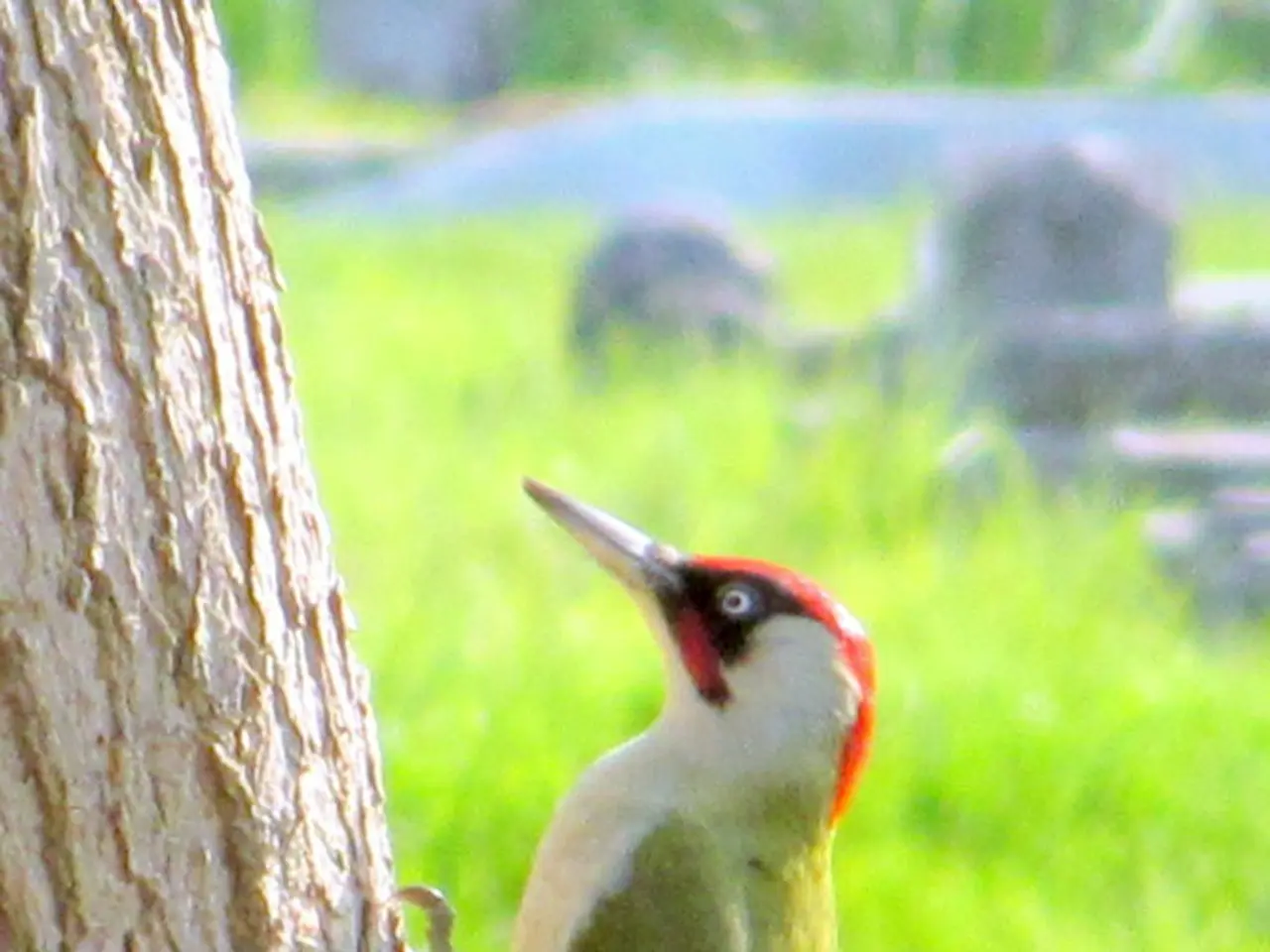Overheard noise is indeed the rhythmic pounding of spring arriving in full force.
In the heart of the United Kingdom, the lesser spotted woodpecker (Dryobates minor) stands as a native but rare resident species that is currently in decline and highly localized. This small woodpecker, the smallest of the three native species in the UK, is estimated to have around 1,500 pairs remaining.
Despite its global conservation status being listed as Least Concern, in the UK, the lesser spotted woodpecker is considered rare and has experienced population decreases. A recent monitoring effort in the UK revealed a positive note, with 24 active lesser spotted woodpecker nests recorded, the highest number in the last decade. However, the species remains in decline overall.
The primary causes of decline for the lesser spotted woodpecker in the UK are habitat loss and fragmentation, especially the reduction and management changes in mature woodland and deadwood availability. This aligns with the general factors responsible for species decline discussed globally, including destruction, modification, or curtailment of habitats, inadequate regulatory mechanisms for protecting habitats, and other natural or man-made factors affecting survival.
While less frequently cited, reduced food availability, competition from other species, and possible predation may also contribute to the decline of the lesser spotted woodpecker.
The great spotted woodpecker (Dendrocopos major), on the other hand, is the most common of the three native woodpeckers in the UK. An unmated male great spotted woodpecker can drum up to 600 times a day and can be heard up to half a mile away.
Ancient broad-leaved woodlands are the best places to see woodpeckers. The lesser spotted seems to prefer birch and alder and has a strong preference for wet woodland, while the green woodpecker has a strong ecological association with the oak.
The green woodpecker (Picus viridis) is the largest of the UK woodpeckers and is known for its maniacal 'yaffle' or laugh. Unlike the lesser spotted, the green woodpecker spends a good deal of its time hopping around on the ground, probing for ants with its specially adapted beak and long, sticky tongue.
The Woodpecker Network, set up in 2015, is monitoring the remaining population of lesser spotted woodpeckers using various methods, including telescopic nest cameras. Urban great spotted woodpeckers have been known to use gutters, drainpipes, and satellite dishes for drumming.
In a surprising turn of events, a young great spotted woodpecker was captured on camera in 2024 trying to ring a doorbell in an attempt to get an empty bird feeder filled. The green woodpecker, known for its loud 'yaffle', feeds its young with ant porridge and will sometimes break into bee hives to steal bee larvae in cold weather.
Despite the declining status of the lesser spotted woodpecker, continued habitat protection and restoration efforts are crucial to prevent its further decline in the UK. The conservation status of these fascinating birds serves as a reminder of the importance of preserving and protecting our natural habitats.
Maintaining the lifestyle of a lesser spotted woodpecker necessitates a home-and-garden setup that includes mature woodlands, preferably with birch and alder trees, and a sufficient amount of deadwood. The conservation status of these birds highlights the significance of home-and-garden practices that promote and protect their habitats.




